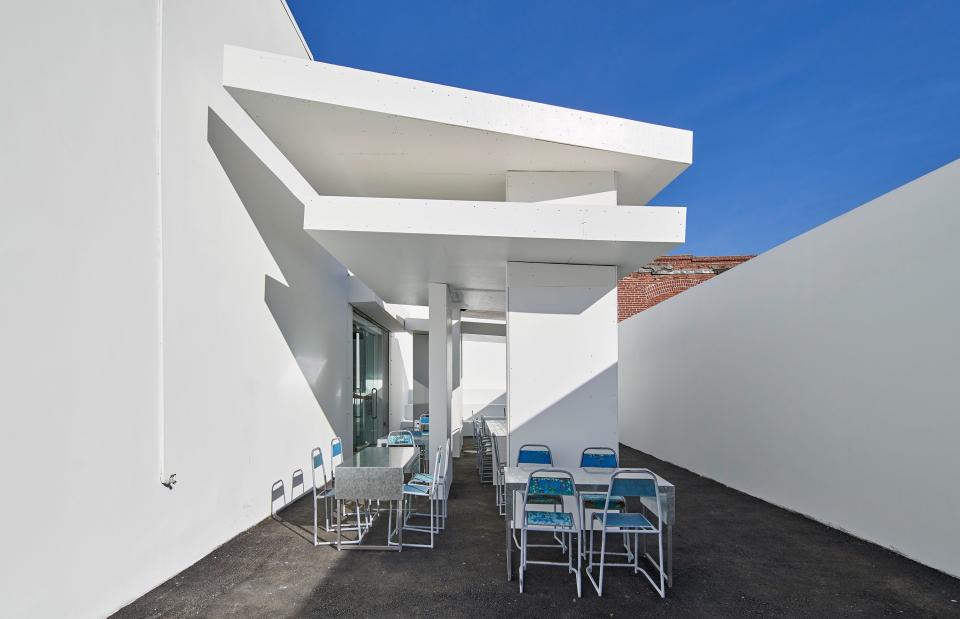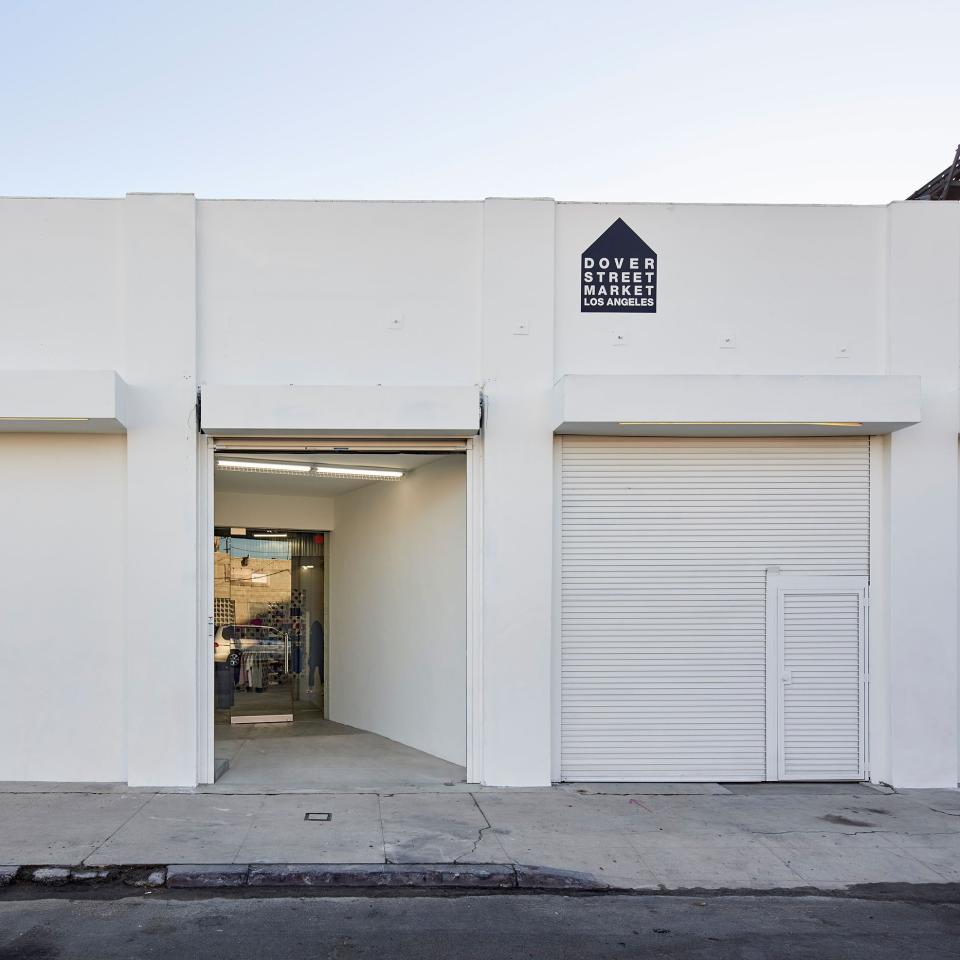Why Dover Street Market’s New Los Angeles Store Is a Game Changer
By now, as far as trend-spotters are concerned, it’s fair to say that Los Angeles is no longer the next big thing—it is the big thing. Every couple of months or so, something seems to ratchet up the city’s It factor: another tastemaker relocates from elsewhere; another institution halfway across the globe fetishizes it; another boutique opens its doors. (As one transplanted Brooklyn designer recently put it, “I moved here to get away from New York fashion people, and now all those people are here.”) And so, it’s both provocative and not provocative at all that Dover Street Market—that global arbiter of all things new and next, hip and hyped—has opened its sixth outpost here, in the Arts District east of downtown.
The 15,000-square-foot former warehouse, spread across two connected buildings, differs from its predecessors in London, New York, Tokyo, Singapore, and Beijing in much the same way that Los Angeles itself does: It’s sunlit and sprawlingly horizontal. Like the other locations, DSM L.A. houses a series of nook-like installations for various collections, brands, capsules, collaborations, and store-in-stores, as well as a Rose Bakery, though this version of the café also includes (this being California) an outdoor terrace. The industrial-futuristic architectural modules throughout—white and silver in varying textures and shapes—were designed by Rei Kawakubo herself, and the effect of wandering between them, without all those stairs or elevators to break things up, is one of continuous surprise and occasional disorientation, like an Epcot ride for adults, or a haunted house without the fear factor. (It’s definitely not haunted: In true Los Angeles fashion, the space was “cleared” before construction via three different New Age healing modalities, as filmmaker-actor and Kennedy scion Rose Schlossberg explains in one of the videos the store commissioned her to make.)
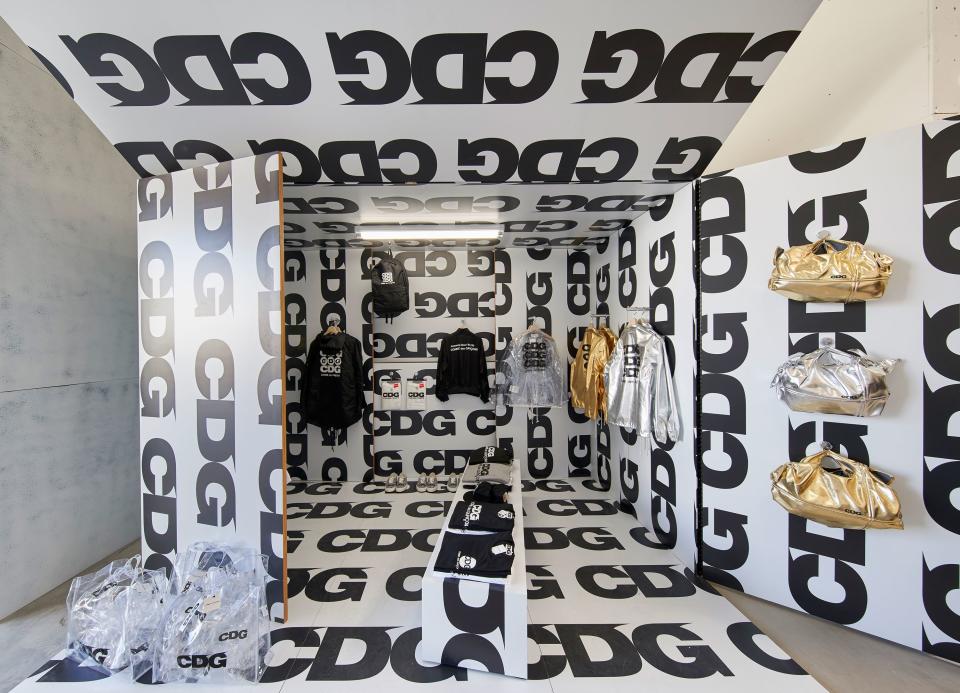
Just before the opening, Dover Street and Comme des Garçons CEO Adrian Joffe wore a thick rapper-style faux-gold chain with a massive DOVER STREET MARKET LOS ANGELES pendant—the store’s cheeky staff identifier tag—as he roamed the premises. “We’ve been thinking about a second [U.S. store] since we opened in New York,” he said. “Everybody in the industry said, ‘You gotta do it in L.A.’ Of course, there’s the conversation about its resurgence—the art, the music—and the cinema, the best in the world.” But also, he explained, “It’s open to new ideas. We like that. Even back in the ’50s—Krishnamurti, Timothy Leary. It’s always been an open place.”
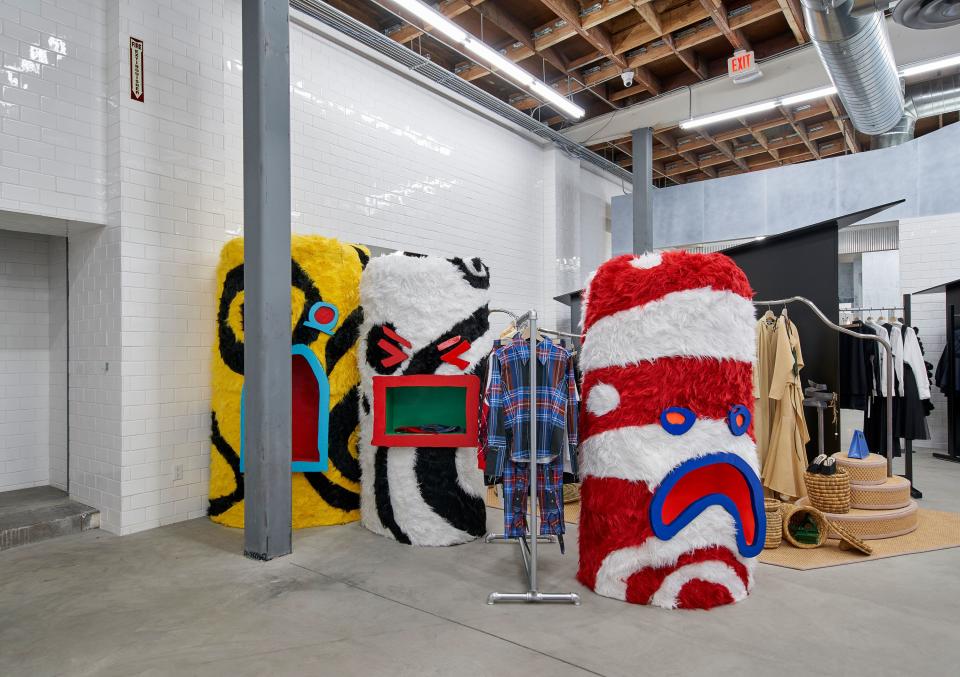
Right now, no part of the city is as open—wide open—as the postindustrial Arts District. It’s bike-able, if too vast to qualify as walkable, with freeway access in every direction and appealing old factory buildings at various stages of conversion. Three blocks from where we were standing—just past an indoor gun range, over on Alameda—men sleep in tents, and 18-wheelers load and unload wholesale produce. Yet Hauser & Wirth’s museum-size gallery is here, so are Phillip Lim’s new store and too many third-wave coffee roasters to count. A pair of 57-story towers by Herzog and De Meuron—housing a hotel, thousands of luxury apartments, a K-12 school, and even more retail—will soon sprout around the corner, as will a smattering of other starchitect-branded condo and hotel developments, a Soho House, a light-rail station, and Time Warner’s new West Coast HQ. The future on-ramp to the new 6th Street Viaduct—which will be a High Line–esque mix of parks, public art, and walking trails when it opens in 2020—is across from DSM’s parking lot (yes, crucially, the store has one). Right now, it’s a gravel lot obscured by a slapdash wooden fence lined with black trash bag plastic.
Beyond the undeniable if-you-build-it-they-will-come factor, Joffe also sees DSM’s West Coast flag-planting as an ideological move in the era of Trump and Brexit. “California seems the epitome of the resistance,” he said. “You can’t not be political anymore. It’s the right time for a statement.” The store’s statement, according to him: “It’s inclusivity. It’s community.”
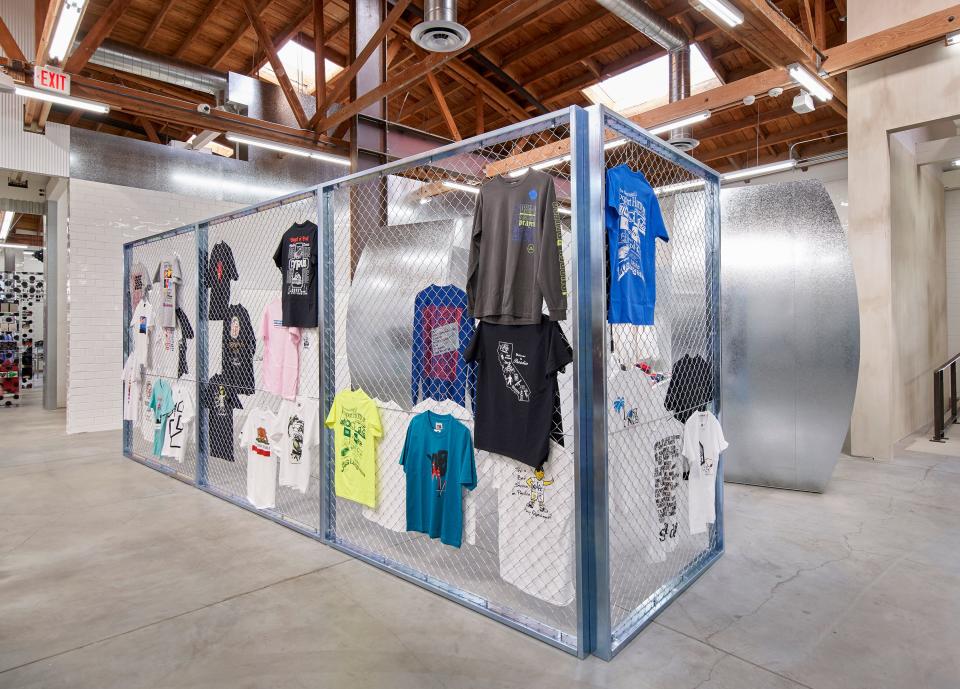
To that end, Joffe and his team made a point of recruiting a wide swath of local talent, from established indie labels—Eckhaus Latta, Sophie Buhai—to underground figures at the nexus of art and streetwear. Eli Russell Linnetz, a young creative-about-town, teamed with artist Jordan Wolfson for a graphic T-shirt series and designed his own capsule of neon separates; designer Kyle Ng of Brain Dead created, in addition to clothes, handmade ceramics and a graphic label for a special edition of quince jam from beloved East Hollywood café Sqirl. The dedicated T-shirt zone, enclosed with chain-link fencing, is a highlight; some of the graphics poke wry fun at the heaven-and-hell paradox that is California.
“The nice surprise is that a lot of the so-called streetwear brands are more creative and artistic in L.A.—it’s not just putting a logo on a T-shirt,” Joffe said. “It’s streetwear defined as what people in the street wear, rather than what it became when the luxury brands got a hold of it.”
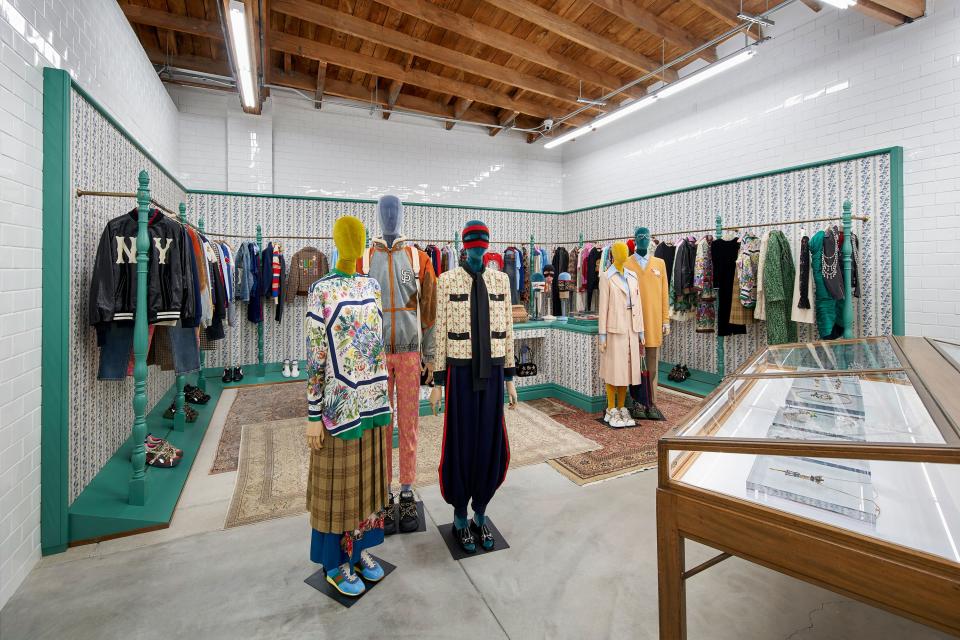
Not that luxury brands have been left out: There’s a Chanel jewelry alcove and an incongruously retro-wallpapered Gucci corner. Current toast of the industry Marine Serre, a first-timer fresh off her 11-hour flight from Paris, was manning the elaborately torqued rack that comprised her first-ever permanent retail space at the Friday night party. She’d been in town for less than 24 hours, but had already taken the bus, something people had told her not to do. “It’s a really weird melting pot of things you don’t think go together,” she said, when asked about her initial impression. “I think I have a connection there.” She was also taken with the street style glimpsed from those bus windows—“people really aren’t shy about the way they dress here”—and the excitement the store’s construction workers had for the space they’d just finished building. “When new things open, it gives a certain vibe and hope and energy. People want to experience things.”
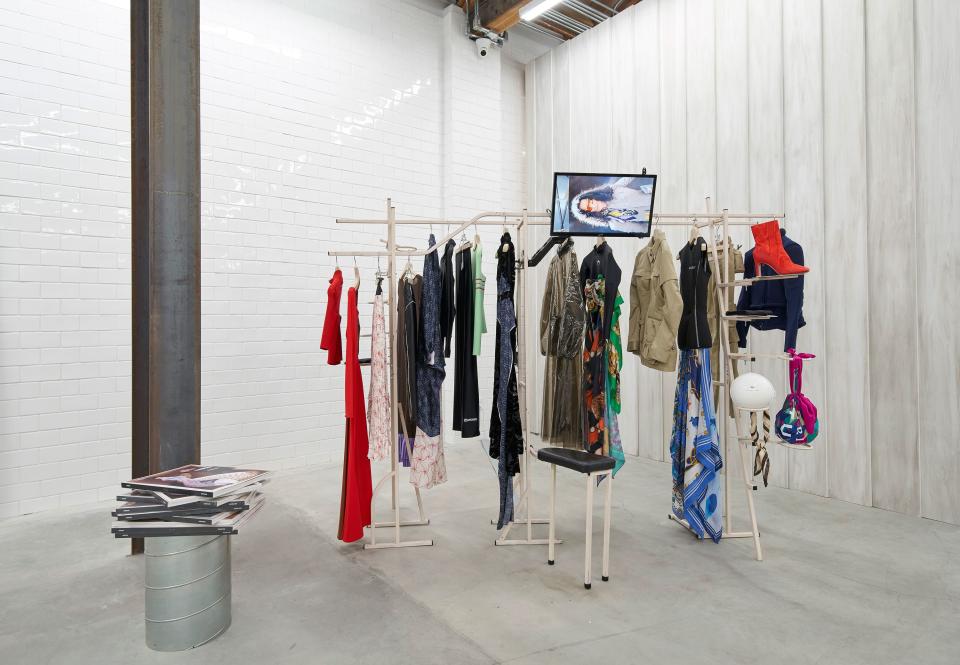
And that’s the thing about Los Angeles—it hasn’t all been done before, and buying clothes is almost never a result of happenstance, the way it is in Manhattan. You need a compelling reason to leave the house. You crave one. And so, until the Arts District really does become the Manhattan that developers say it will, a totally over-the-top destination flagship in a still-transitioning neighborhood isn’t so much a gamble as a no-brainer. On Friday night, as hypebeasts—hundreds of them—sipped Champagne and examined padded dinosaur-skeleton sculptures and swarmed the cash registers, the smog outside turned the sunset sky a lurid lavender-persimmon swirl, a panorama pierced only by a cell phone tower dressed as a palm tree. Try finding that on Amazon. “Human beings need conversation, to touch and feel something,” Joffe said. “We want to get people excited about going out, instead of going online.”
